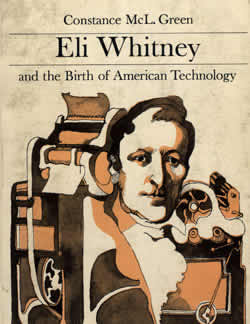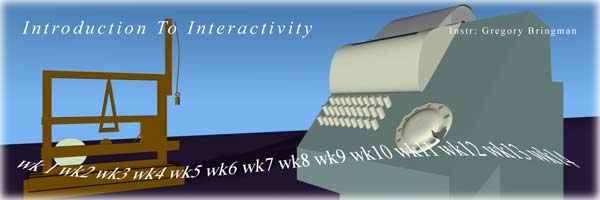
History of Modularity in the Industrial Revolution
History has considered Eli Whitney to have been a mechanical
genius. As the inventor of a better Cotton Gin or Cotton Engine, a much
more efficient and productive machine than those in use in the early 1790s,
he further established himself in the way that history records. In some
ways he is the father of a revolution in industry, and could even be linked
to a model of computing in the Twentieth Century, or to any construction
of advanced machines.
He developed his skills in childhood, and as one would expect he continued
to innovate in adulthood. After the engine, he made his most important
contribution with the manufacturing principle of uniformity. It is true
that in France in the 1780s Le blanc had developed a manufacturing scheme
that used interchangeable parts for rifles: the barrel, the bayonet etc.
Whitney developed the concept of uniformity of parts while working independently
of Le blanc, also in the production of rifles or muskets.
At least at first, he only used the concept of interchangeable parts with
the locks for the rifles. A wonderful image that Greene paints in his
tracing of the events of Whitney’s work, is the dumping of several
sets of parts of rifle locks before government officials in order for
Whitney to win monetary support for his methods. The officials might put
the weapons together based upon part types that were specifically not
tailored for any one rifle, but were interchangeable.
His methods were to standardize parts through building machines that removed
the necessity of skilled artistry in commodity or rifle production. His
machine tools later led to the invention of precision chiseling devices
that could systematically and precisely engineer interchangeable components
and they also led to the development of precision lathes.
While standardized parts and machines to build machines led to a type
of technological and productive efficiency, in some respects Whitney’s
work did not have time to develop into a refined system that would have
allowed one mathematician, Charles Babbage, to bring us to the computer
age in the 19th Century. The logic of contemporary computing, that of
reusability and modularity, was not possible even given Whitney’s
system, as Babbage’s engine could not be built until 1998, about
170 years later.
Although not early enough for working computers, Whitney’s achievement
helped to convince government officials and business owners that machine
tools, no need for skilled labor, and uniformity of parts could facilitate
production of other machines, tools, and commodities. This affected production
greatly in subsequent periods of manufacturing. In some sense we still
have interchangeable parts in the information revolution.
The Cocoa development environment on the Apple Macintosh, is an extremely
sophisticated system of reusable and modular components that can be put
together with less rewriting or coding of tasks. Cocoa was developed on
Next machines before being ported to the apple OS X development environment.
It allows completely customizable widgets and operating system tools and
components through less programming, almost making the construction of
software mechanical like a set of parts to be put together by government
officials as in Whitney’s days.
One notes that the arguments against reusability and modularity in computers
stem from the passing of the industrial age that Whitney helped to launch,
and the consideration of possibly new needs for the digital age. Yet,
in the late 20th century, the Frankensteinian transplant of a human hand
onto a patient who had lost his natural hand in an industrial accident,
suggest two things. Not only can industrial processes maim humans in an
act that strives to make them like machines with reusable parts, the operation
grafting and transplanting the human hand onto a body shows that we are
in fact made of reusable parts. If in humans, than why not in computers?
Another interesting aspect from Whitney is that in order to switch to
a different commodity, he would have to have his machines undergo a process
of "retooling": he would have to convert the machines that make
the then current commodity so that they could manufacture the parts for
the new commodity, with precision. Each precision part needs an elaborate
machine to precisely manufacture it, and each machine had to be rebuilt
to change the part let alone the product. In some sense software continually
has to be updated as technological interfaces change.
When the web was young, web pages primarily used HTML. With the growth
of the Internet, we see the use of XML and other languages, both programming
and scripting, on the Internet. Software must be retooled to allow the
production of content in terms of current web technologies. With these
metaphors, it is easy to reflect on the similarities or industrial and
information ages, the difference being that the industrial is made from
all different compounds found in the world; the information, from metals
and cable that encode and transport signals and data. Both are representations
of modularity and reuse.
Back to the Science Fiction
Debate on Modularity
|

